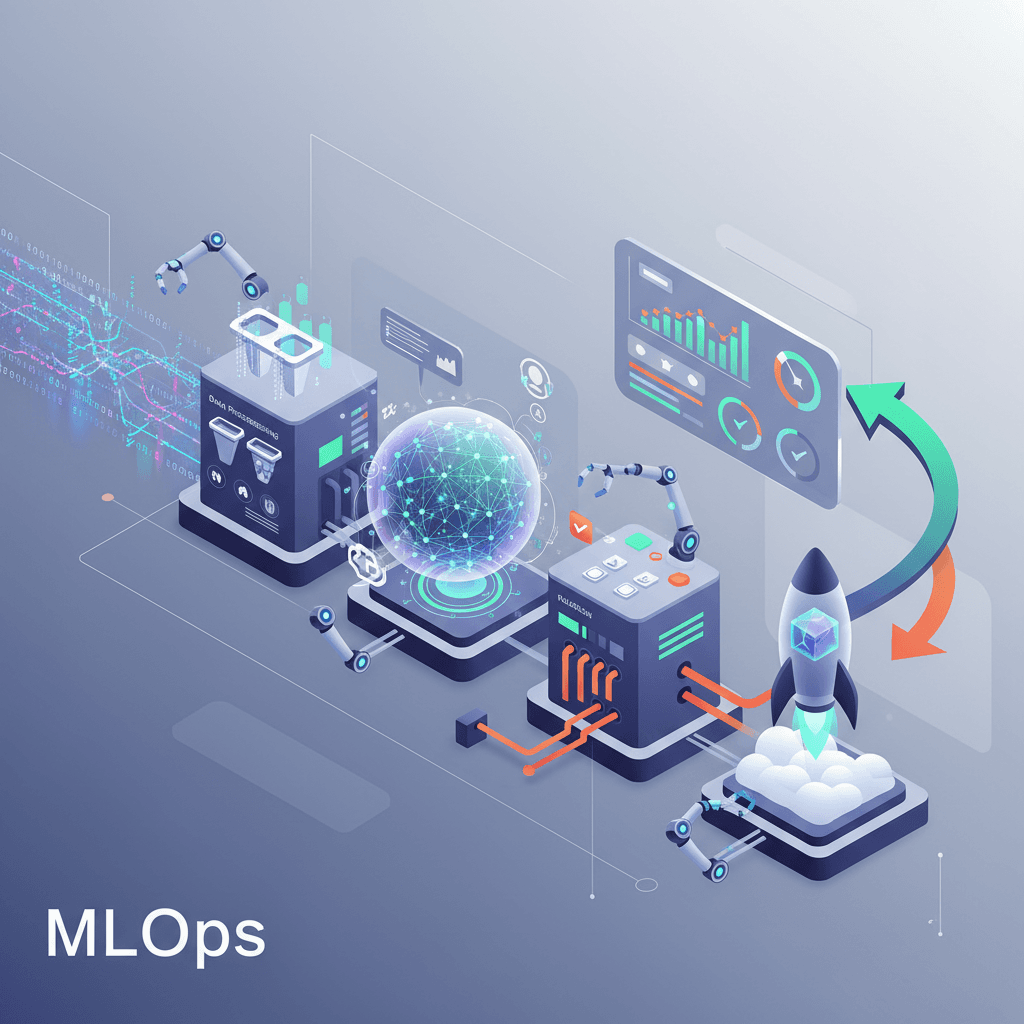AI Breakthrough: MLOps Unleashes Scalable, Reliable Machine Learning
From experimental models to robust production: MLOps addresses the unique challenges of deploying and managing AI at scale.
November 3, 2025

The integration of artificial intelligence into software applications is proliferating, yet the journey from a functional machine learning model to a reliable, scalable production system is fraught with unique and complex challenges. Unlike traditional software, where code updates are largely deterministic, AI and machine learning models are dynamic, their performance intrinsically tied to ever-changing data and intricate statistical behaviors.[1] This reality has exposed the limitations of conventional software deployment practices and given rise to a specialized discipline known as MLOps, or Machine Learning Operations. MLOps extends the principles of DevOps—automation, collaboration, and continuous iteration—to the entire machine learning lifecycle, aiming to make the deployment and maintenance of AI systems as reliable and efficient as their traditional software counterparts.[2][3] This shift is not merely a technical adjustment but a fundamental change in culture and practice, essential for any organization seeking to harness the full potential of its AI investments.[4]
Deploying artificial intelligence at scale presents a host of obstacles that distinguish it from standard application deployment.[1] A primary concern is data and concept drift, where the real-world data a model encounters in production begins to diverge from the data it was trained on, causing a gradual degradation in performance.[5][6] This necessitates continuous monitoring and frequent retraining, a stark contrast to the more static nature of many software components.[5] Furthermore, the machine learning lifecycle introduces its own versioning complexities; it's not enough to track code changes, as teams must also version control the datasets used for training and the resulting model artifacts to ensure reproducibility and traceability.[7][4] The sheer scale of many ML projects also introduces significant hurdles, from managing massive datasets to securing the specialized and often costly computational resources, like GPUs, required for training.[5][8] This complexity is compounded by the need for robust testing that goes beyond typical unit and integration tests to include data validation, model quality assessments, and evaluations of fairness and bias.[9][10] These multifaceted challenges mean that manual deployment processes are not just inefficient but are also prone to errors, creating significant bottlenecks and increasing the risk of production failures.[11][12]
In response to these challenges, the industry has embraced MLOps, a framework that applies DevOps principles to the machine learning workflow to manage its entire lifecycle.[13] MLOps fosters collaboration between data scientists, ML engineers, and operations teams, breaking down the silos that can hinder the transition of models from research to production.[2][4] At its core, MLOps is about building an automated, end-to-end pipeline that encompasses everything from data ingestion and preprocessing to model training, validation, deployment, and monitoring.[14][15] This automation is critical for achieving the consistency, reproducibility, and efficiency required for scalable AI.[11] By establishing standardized processes and leveraging the right tools, MLOps aims to make the ML lifecycle more reliable and predictable.[16] The key components of a successful MLOps strategy involve creating building blocks for data acquisition, feature engineering, model training, serving, and monitoring.[16] Adopting this production-first mindset from the beginning of the development process is crucial for reducing the time it takes to get models into production and ensuring they deliver sustained value.[16]
The engine of MLOps is the Continuous Integration and Continuous Deployment (CI/CD) pipeline, adapted specifically for the needs of machine learning.[17][18] This automated workflow is triggered by changes in code, data, or model configurations, initiating a series of steps to build, test, and deploy new models safely and efficiently.[19] A typical CI/CD pipeline for ML begins with continuous integration, where new code and data are automatically validated.[20] This stage involves rigorous testing, not just of the application code, but also of data schemas and the statistical properties of new data to catch issues early.[9] Following successful integration and testing, the continuous delivery phase automates the deployment of the validated model to a production-like environment.[18] This often involves containerizing the model and its dependencies using tools like Docker to ensure consistency across environments.[21] Advanced deployment strategies such as canary releases or A/B testing can be employed to roll out new models gradually, minimizing risk by exposing them to a small subset of users before a full release.[21][10] The final, crucial stage is continuous monitoring, where the deployed model's performance, as well as operational metrics like latency and error rates, are tracked in real-time to detect drift and trigger alerts or automated retraining processes.[4][22]
The adoption of DevOps for AI and the implementation of robust CI/CD pipelines are becoming strategic imperatives for businesses.[4] By automating the ML lifecycle, organizations can dramatically accelerate the deployment of new models, reducing the time-to-market from months to days and enabling faster iteration and innovation.[21][17] This agility allows businesses to respond more quickly to changing market dynamics and customer needs. Furthermore, automation and standardized testing improve the quality and reliability of deployed models, building confidence and increasing their adoption by users.[23] As AI becomes more deeply embedded in core business operations, the principles of MLOps will become the standard, ensuring that AI initiatives are not just experimental projects but scalable, reliable, and value-generating assets.[24][2] The future of AI operations points towards even greater automation, with the rise of integrated MLOps platforms and AI-driven tools that will further streamline workflows, enhance governance, and ensure that AI is deployed ethically and responsibly.[25][26]
Sources
[2]
[3]
[4]
[5]
[7]
[9]
[10]
[11]
[12]
[13]
[14]
[15]
[16]
[18]
[19]
[20]
[21]
[23]
[26]